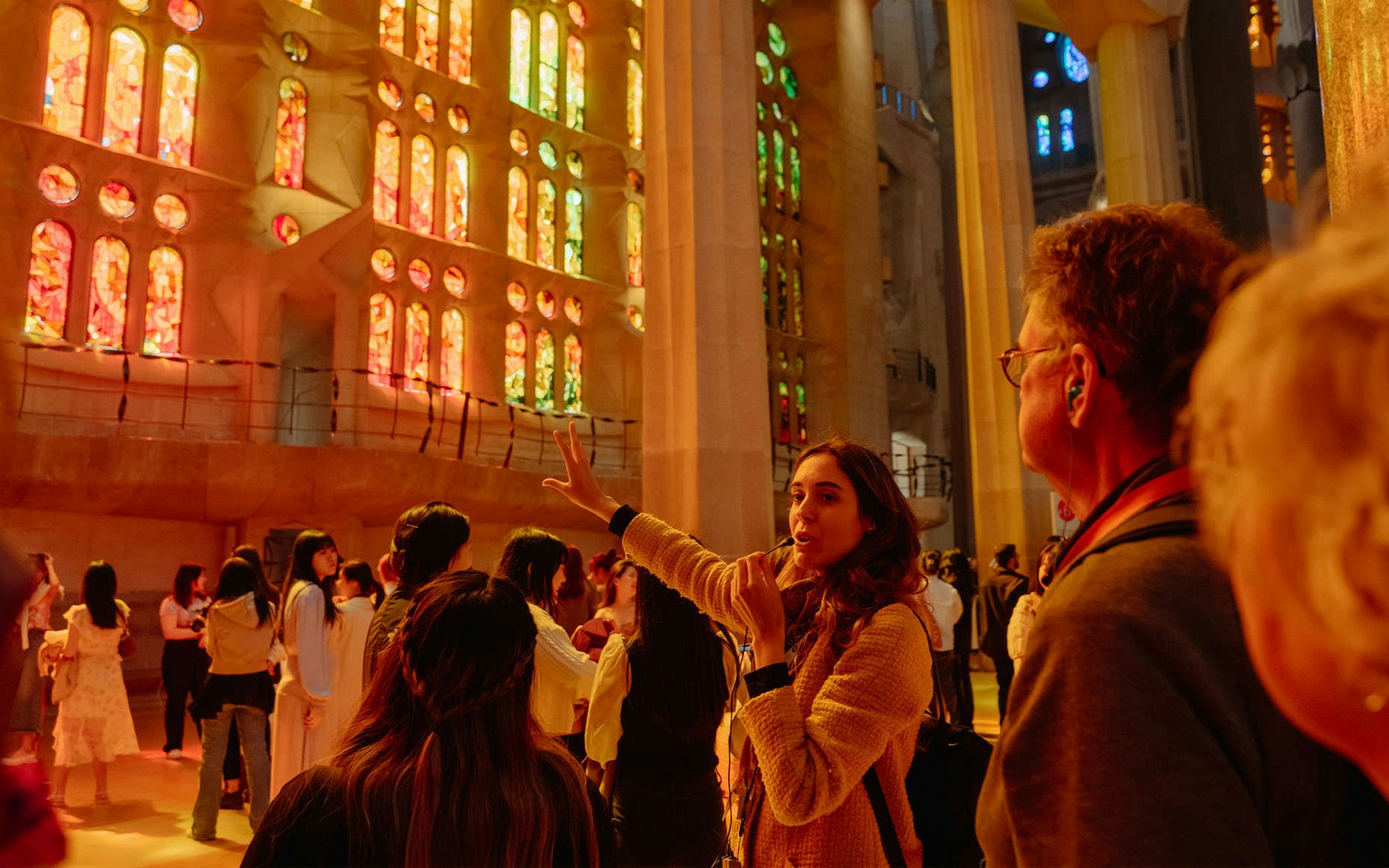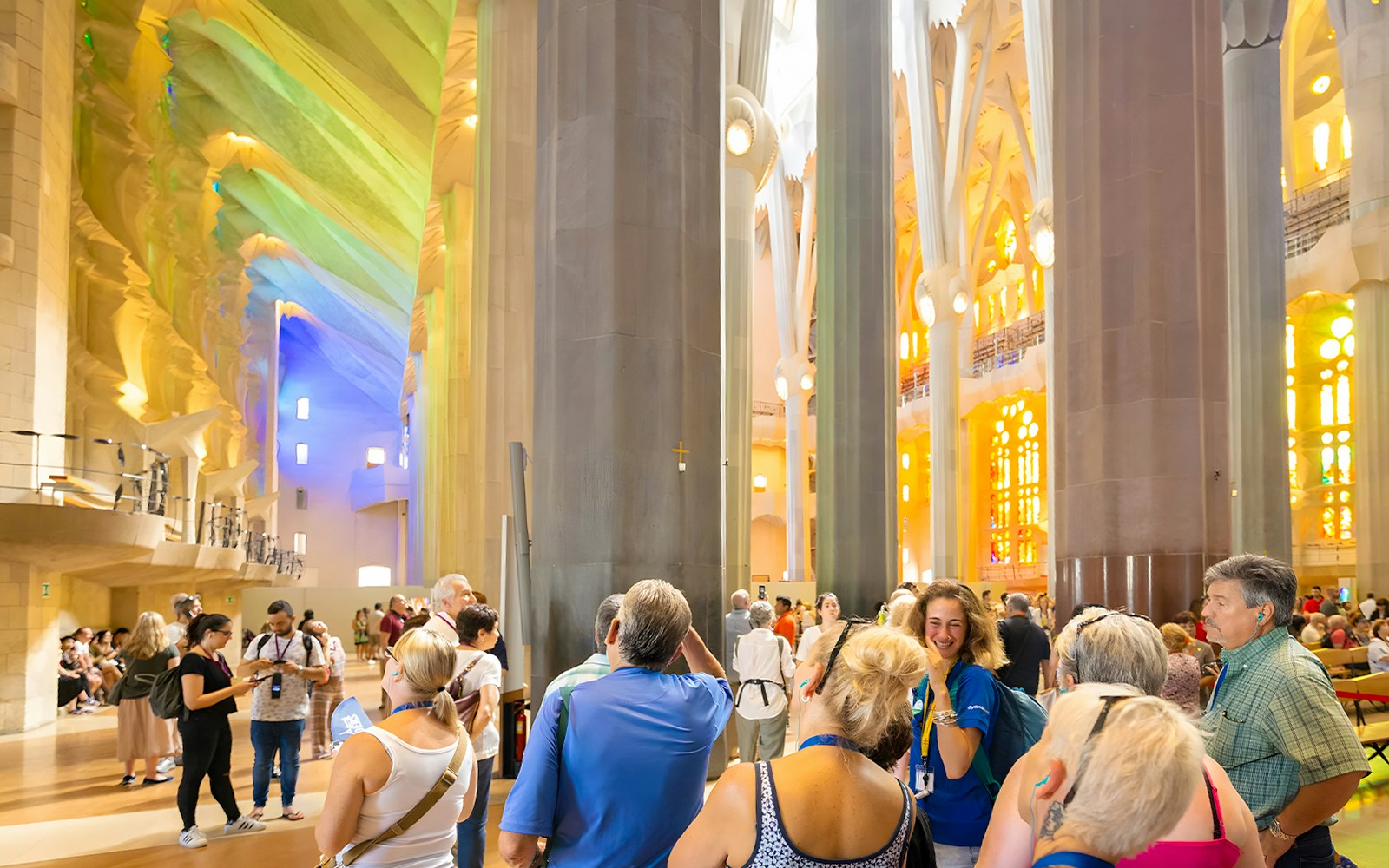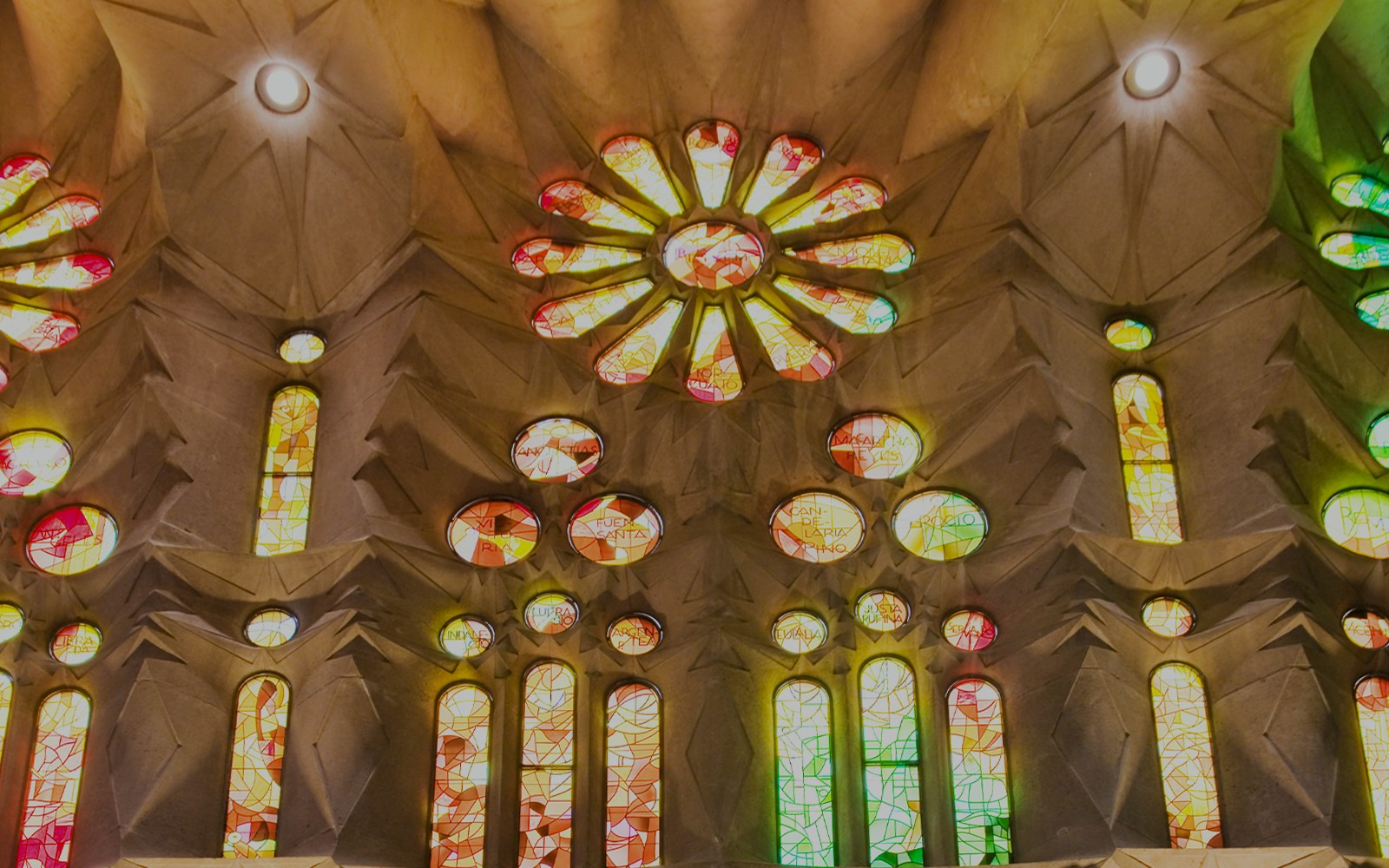Through panes of vibrant hues, a cosmos gleams, Where saints and angels, in celestial dreams, Dance 'midst stained glass, a sacred art, A masterpiece, a work of heart.
When you examine the architecture of Gaudí’s Sagrada Familia, you can see his desire to transcend traditional Gothic styles. Unlike the buttresses and flying buttresses typical of Gothic cathedrals, which Gaudí viewed as mere "crutches," his design eliminates these exterior elements altogether.
This ambition to surpass Gothic norms is also evident in the Basilica's stained-glass windows, crafted by glazier Joan Vila-Grau. These windows play a crucial role in creating a space of reflection and transcendence, fulfilling the purpose of a temple.
In Gothic cathedrals, the most colorful stained-glass windows are often found at the highest points, where sunlight is unobstructed. The lower sections, shaded by trees or buildings, usually feature less intense colors to balance the overall effect. However, Gaudí took a different approach with the Sagrada Familia.
Here, the highest windows are the most transparent, allowing light to flood the space and illuminate the mosaics and golden vaults of the nave. The lower windows, where illustrations and texts reside, feature more intense colors, making them easier for visitors to read and appreciate. This contrast highlights Gaudí’s innovative departure from Gothic traditions
Gaudí's work on stained glass extended to experiments with trichromy, a technique involving three primary colors—yellow, cyan, and magenta—layered with a transparent seal. This approach, inspired by an article on Tiffany glass, aimed to create a sense of depth in the images, as though they were three-dimensional. Although the results were not as Gaudí had hoped, remnants of this technique can still be found in stained-glass windows in Mallorca and Montserrat.
For the Sagrada Familia, however, Gaudí opted for leaded glass, a method backed by centuries of practice. The lead lines, which divide the glass into smaller pieces, not only hold the glass securely but also add rhythm and dynamism to the composition. This technique allows for the selection of specific colors for each piece, contributing to the overall harmony of the design.

The true beauty of the Sagrada Familia's stained-glass windows is most apparent near the solstices. Around the winter solstice, the setting sun's rays enter the nave almost horizontally, flooding the space with warm reds and creating a reflection of each window’s design in colored light on the opposite vault. This phenomenon progresses like a dance, with the reds first illuminating the floor before climbing the columns and eventually reaching the vaults.
During the summer solstice, a similar spectacle occurs on the Nativity façade, where the morning light, filtered through cool blues and greens, creates a serene atmosphere. This dynamic interplay of light and color throughout the year showcases the exceptional craftsmanship of Joan Vila-Grau and the visionary genius of Gaudí, who believed that "Sunshine is the best painter."


The stained glass windows of Sagrada Familia are not just a visual spectacle; they represent Gaudí’s innovative approach to Gothic architecture. Unlike traditional cathedrals where the most colorful windows are placed high up, Gaudí reversed this by placing the most transparent windows at the top to flood the space with light. The lower windows, rich in color and design, are positioned where visitors can appreciate them up close.
The stained glass windows were designed by Joan Vila-Grau, a master glazier who worked closely to bring Gaudí’s vision to life. Vila-Grau’s work ensures that each window contributes to the overall harmony of the Basilica while maintaining its unique design.
The interaction between light and the stained glass windows is most dramatic around the solstices. During the winter solstice, the setting sun bathes the interior in warm reds, reflecting the windows' designs onto the opposite vaults. In contrast, during the summer solstice, the morning light filters through cool blues and greens, creating a serene atmosphere on the Nativity façade.
Gaudí departed from traditional Gothic styles by reversing the placement of light and color. In the Sagrada Familia, the upper windows are more transparent, allowing light to flood the nave, while the lower windows are richly colored and designed to be appreciated up close, creating a unique visual experience that encourages reflection and meditation.
The stained glass windows on the Nativity façade are characterized by cool blues and greens, creating a serene and peaceful atmosphere. In contrast, the Passion façade features warm reds and oranges, reflecting the more somber themes associated with this side of the Basilica. This contrast highlights the unity and diversity of the overall design
Sagrada Familia Fast-Track Tickets
Sagrada Familia Fast-Track Guided Tour with Towers Access
Sagrada Familia Fast-Track Guided Tour
Combo (Save 14%): Sagrada Familia Tickets + Barcelona Hop-On Hop-Off Bus Tour
Combo (Save 10%): Park Güell + Sagrada Familia Hosted Entry Tickets
Combo: Park Güell + Sagrada Familia Skip-the-Line Guided Tour